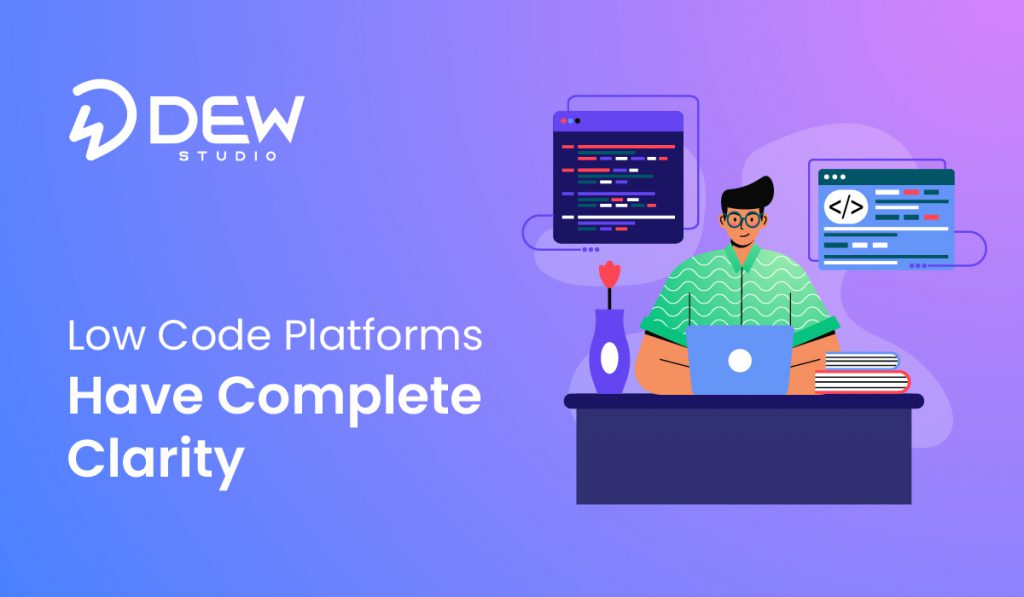
Are you curious about the growing popularity of low-code platforms and their impact on digital transformation and software development processes? Well, you’re not alone!
In recent years, organizations worldwide have been turning to low-code platforms to accelerate their application development and streamline their workflows.
In fact, according to a study by Forrester, the low-code market will have already reached a staggering $21.2 billion by 2022. This statistic illustrates the significant impact that low-code platforms have on the software development landscape.
But amidst their rising popularity, several misconceptions and myths surround low-code platforms. Let’s address some common misconceptions and bust those myths, shall we?
In this blog post, we will debunk some of the latest myths and separate facts from fiction on low-code platforms.
Myth 1: Low-code platforms are only suitable for simple applications
One of the common misconceptions about low-code platforms is that they are only applicable for developing simple applications. This myth stems from the belief that low-code platforms are limited in their capabilities and lack the complexity required for building robust, enterprise-grade applications.
However, this myth couldn’t be further from the truth. Low-code platforms have evolved significantly over the years and now offer a wide range of features and capabilities.
- These platforms provide extensive support for complex workflows, integrations with external systems, and the ability to write custom code when needed.
- Many organizations successfully use low-code platforms to build and deploy complex applications that meet their business needs.
Myth 2: Low-code platforms lead to poor-quality applications
Another myth surrounding low-code platforms is that they result in poor-quality applications. It is believed that the lack of traditional coding practices and reliance on visual development leads to less robust and maintainable applications.
In reality, low-code platforms have built-in guardrails and best practices that ensure the development process is aligned with industry standards. These platforms enforce good coding practices, such as separation of concerns, security measures, and scalability considerations.
- Additionally, low-code platforms often provide extensive testing and debugging capabilities, ensuring the quality of the developed applications.
Myth 3: Low-code platforms limit customization options
Some believe low-code platforms limit customization options, forcing developers into a rigid framework or predefined templates.
In fact, low-code platforms offer significant flexibility and customization options. While these platforms provide pre-built components and templates, developers can modify and extend them as they see fit.
- In cases where visual development alone cannot meet certain requirements, it also offers the option to create custom code using HTML, CSS, and JavaScript.
Myth 4: Low-code platforms are only for citizen developers
Low-code platforms are often associated with citizen developers and non-technical users with limited programming knowledge. It has led to the misconception that low-code platforms aren’t suitable for professional developers.
The truth is that low-code platforms are designed to cater to a wide range of users, including professional developers. These platforms enable professional developers to use their coding skills while accelerating development through visual interfaces and automation.
- Low-code platforms provide an environment where both citizen developers and professional developers can collaborate, ensuring the best of both worlds.
Myth 5: Low-code platforms are a threat to traditional coding
Some developers fear that low-code platforms may eventually replace traditional coding and render their skills obsolete.
Contrary to this myth, low-code platforms are not meant to replace traditional coding. They are designed to complement traditional coding practices and empower developers to build applications faster and more efficiently.
- Low-code platforms provide tools and features that help automate repetitive tasks, accelerate development cycles, and free up developers to focus on more complex and critical aspects of application development.
Myth 6: Low-code platforms are not secure
A common misconception surrounding low-code platforms is that they are not secure enough to handle sensitive and critical data. It is believed that the abstraction of coding and reliance on pre-built components make low-code platforms more vulnerable to security breaches.
In reality, low-code platforms prioritize security and include robust security measures. These platforms often provide encryption capabilities, role-based access control, and vulnerability scanning.
- Low-code platforms offer a secure development and deployment environment with built-in security controls and compliance with industry standards such as OWASP, ISO 27001, and GDPR.
- It also provides audit logging and monitoring features to track and mitigate potential security threats.
Separating Facts from Fiction
As with any emerging technology, low-code platforms have been subject to various myths and misconceptions. However, it is crucial to separate fact from fiction when evaluating the capabilities and potential of low-code platforms.
The truth is that low-code platforms have come a long way and are now capable of building complex and robust applications. Citizens and professional developers can collaborate with them thanks to their flexibility and customization options. Low-code platforms are not a threat to traditional coding but rather a way to enhance and accelerate the application development process.
Conclusion
By understanding the true potential of low-code platforms and debunking the myths surrounding them, organizations can make informed decisions about adopting this technology and using it to drive their digital transformation initiatives. With low-code platforms, businesses can build enterprise-grade applications for multinational corporations while empowering citizen developers to create innovative solutions.
Contact DEWStudio, powered by TechRev, today to learn more about how low-code platforms can benefit your organization and assist with your digital transformation journey. Don’t miss out on this opportunity to use our expertise and experience for your success.


